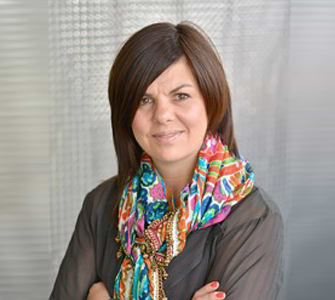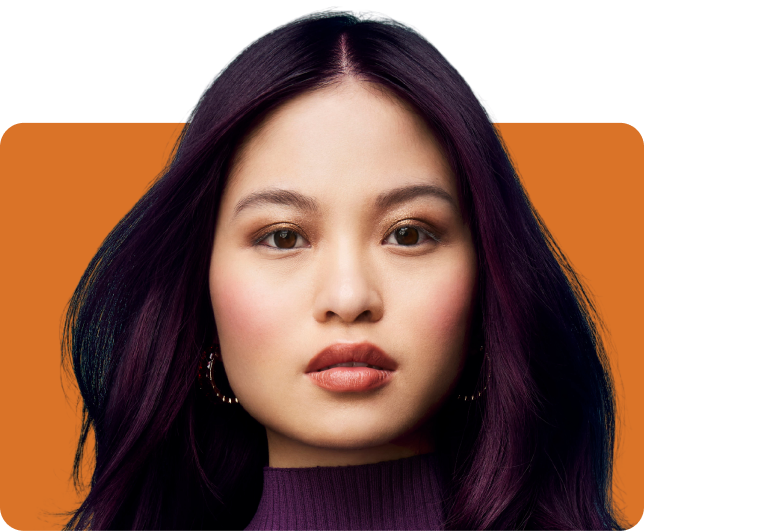Madison Reed | October 22, 2013
Meet the Experts: Susan Roberts-Cooper

Image by Madison Reed
In Her Own Words: Susan Roberts-Cooper, Madison Reed’s Hair Color Guru
Meet Susan, Madison Reed Director of Research & Development. With over 30 years of experience in the salon, she’s developed a finely attuned beauty ESP. “The thing about hair is that it’s not what’s on your head — it’s what’s in your head.”
Read on for her enthralling past, musings and advice — including the single biggest mistake women make when coloring hair. Not to worry, she has a solution and it’s brilliant — if we say so ourselves.
On How She Became An International Hair Color Expert
“I’ve been coloring hair for a long time. The way we do it in England is that we start at 16. You learn all about the basic chemistry of hair. Also, I learned how to shave men with a razor; we did that on balloons, which was very entertaining. I studied two years, full-time, and left for London at 18. I worked at a very small but posh salon. We had lots of royalty, celebrities and “Mayfair maidens.” Then, I went to work for someone called Daniel Galvin, the first color expert in London. He had been the lead colorist at Leonard’s, which in the 60’s, was the counterpart to Sassoon’s. From there, I worked with Trevor Sorbie, one of the most famous hairdressers in the world. I was his colorist. Then I moved to Wella. Working for Wella in the UK, I looked after the best salons. Those are the people hairdressers would know — like Mahogany, Nicky Clarke and John Frieda.
In the interim, I had fallen in love and got married. My husband was working for TIGI- the hair product side of Toni&Guy and decided to found TIGI Asia. When you’re in love, you have to make some sacrifices. So, we moved to Singapore. They had just set up the Toni&Guy salon there. Singapore was an amazing place to be. This was 17 years ago. From there, we moved to Hong Kong where I opened the first Tony&Guy salon. In between that, we had two kids. Later, my husband was relocated to Texas (where the Toni&Guy headquarters are). I had to sell my partnership in the salon, which was hard, and move our life away from Hong Kong, which was awful because it’s an amazing place to live, especially if you’re a woman. But as luck would have it, TIGI was preparing to launch TIGI Colour – their first hair color line. I put together all the training and education. It was the most successful product launch ever in the history of TIGI. Four years later as a consultant, I helped put together both the physical color product and educational ideas – aimed at creative professional colorists. That second color line established TIGI as a real force in the world of professional hair color. What’s great for me is that now I can turn to the consumer world and talk directly to clients of Madison Reed.
I’ve lived in the States for ten years. I still color. I have my own clients whom I love. If I don’t do it, I really miss it. It’s a people business; working with people on such an intimate level, it’s like a laying on of hands. Being able to transform them is really cool. And it’s important for me to keep my hand supple, so to speak. What I do on a daily basis is work with Madison Reed.”
On Madison Reed’s Innovative Formula: “It feels like conditioner.”
“There’s a fear amongst people generally, not so much hairdressers — but also a little bit with hairdressers — about what the product might do. The main thing is ‘Oh, is it going to dry my hair out? Oh, is it going to give me the results I want?’ By making the product as user-friendly as possible, making it as fail-safe as possible, making it smell nice and a good consistency, so it’s not difficult to apply…all those things are reassuring for people embarking on [hair color] for the very first time. It feels like conditioner. It smells like conditioner. And it looks like conditioner. We’ve spent a lot of time creating the best product you can imagine. So, you can rest assured.
To take the apprehension away is the main thing. Also to give people what they need. If you go to color your own hair, you’ll need two pairs of gloves. You might need clips. It would be nice if you had a cap to stop you from staining anything. It would be nice when you finish not to have the tell-tale signs of having colored your hair. Your hair should smell great afterwards. You shouldn’t have stains on your skin. Why not design the product so you don’t get that in the first place? At Madison Reed, we’ve addressed all of those things.”
Her Best Advice for Coloring Hair at Home:
“You know what’s probably the biggest single mistake people make? If you’re just coloring your roots, and constantly taking the color to the ends, you’re not giving yourself the opportunity to stop and reassess. You sometimes get caught in this automatic pilot. In actual fact, hair color is never the same from roots to point. It’s always lighter and warmer on the ends. That’s what women are generally guilty of — they don’t take time for themselves. What’s a good idea to do is have a look at your hair. Do you like the way it looks? If you cover your roots, and say ‘You know, that looks good,’ then you might find you only have to do the roots.”
Her Genius Hair Color Method for Covering Roots:
“If you’re maintaining your color, generally speaking, you would put color on the roots, but if you decide you want to refresh your color — maybe you were on holiday, perhaps you haven’t been quite as diligent looking after it as you could be — if that’s the case, put color on your roots, wait 20 minutes, then put color through the mid-lengths and ends — and wait 15 minutes before taking it off.
What’s great about education, it’s good to see the light come on. It happens all the time when I talk to clients. Every single time I have an interaction with the client — if I’ve known them for years or when I first meet them — I look at them as a whole person as opposed to just above the hair line. I always look at skin tone, what they’re wearing, what jewelry they have on. The first thing they do when you go to a salon is put a gown on your, and you’re completely cut off — you’re just a head of hair. I think a lot of hairdressers are guilty of that. As an educator, what I constantly strive to do is take them out of that. It’s hard to do because it’s their comfort zone. Have you ever noticed, you’re at the salon, and you’re sitting there in front of the mirror; that’s not usually a comfortable place to be, but for the hairdresser, it’s completely comfortable. In fact, if you turn around and speak to them, they’ll turn you back. Have you ever noticed that? I’ve seen that happen at salons where the lady will be sat in the chair. Hair looks fantastic; the gown comes off — and it’s hideous. Maybe it’s because she’s got pink on and they’ve turned her hair red, or the length doesn’t work with her body shape. It happens all the time. As a consumer, you’re at the mercy of the hairdresser. And this is a lot about the empowerment of doing your own hair and your own color.”
On What Makes Madison Reed’s Hair Color Special:
“Everyone wants their hair to look shiny and that’s where hair color can help. It can really improve the look of your hair. Nobody every says ‘Make my hair look dull.’ So, as a colorist, that’s a gift. You can do that so easily with hair color. We made the product for shine. We wanted hair to end up looking better. What we also did in developing Madison Reed was to emulate what professional colorists do. A hair colorist will mix two or three colors together in order to make the color look more complex. What Madison Reed does is take two or three tones and put them all in one tube. So, you get that sophistication as opposed to just one color.”
By: Cheryl Locke
Find Your Perfect Shade
Take our 2 minute quiz to get your colorist-approved hair color match!
Take the quizGet Free Shipping
Plus exclusive promotions, hair tips and info about events near me when you subscribe!
















